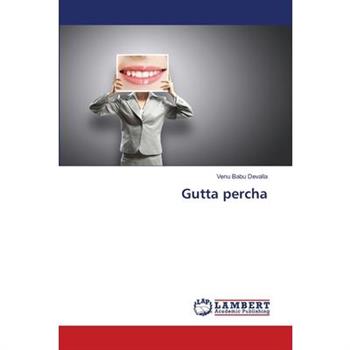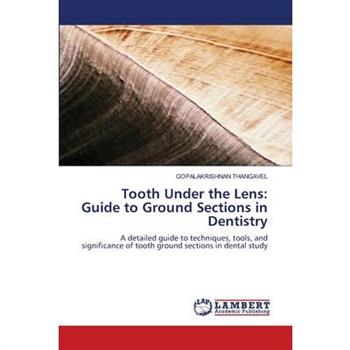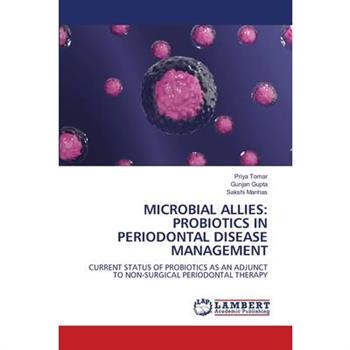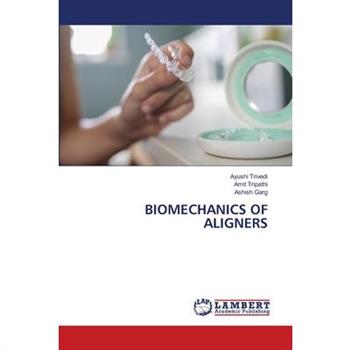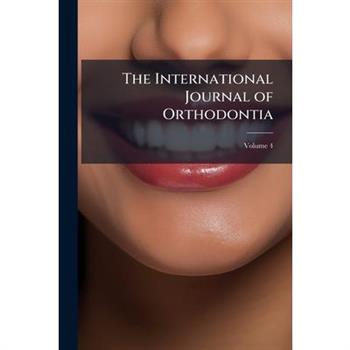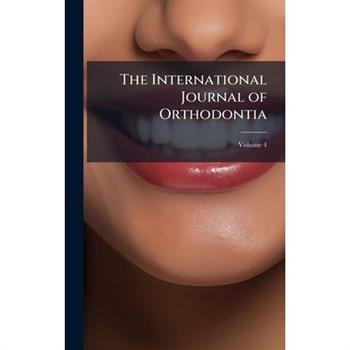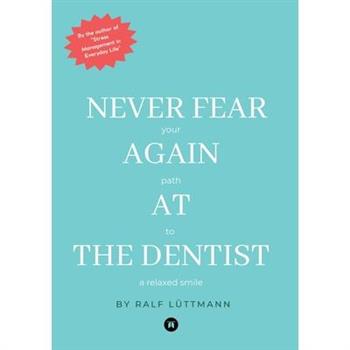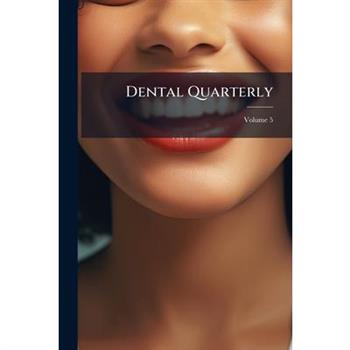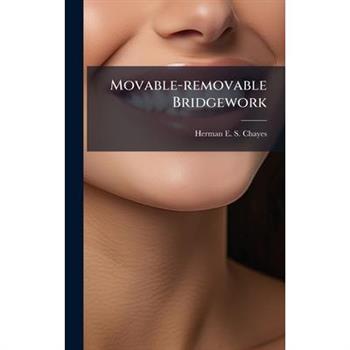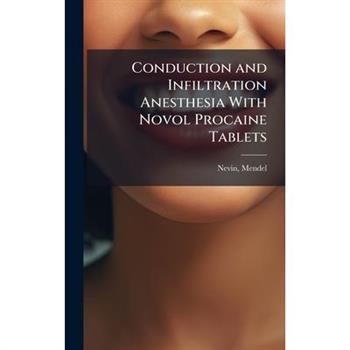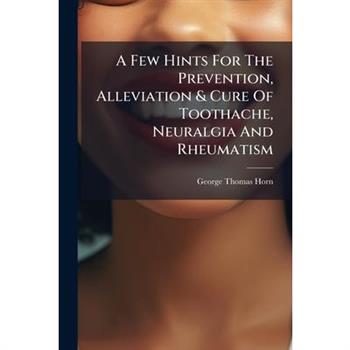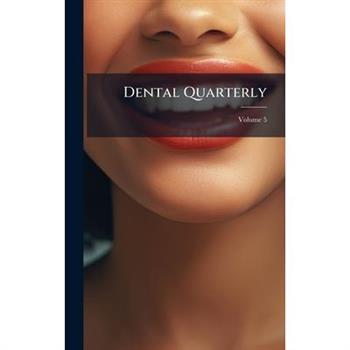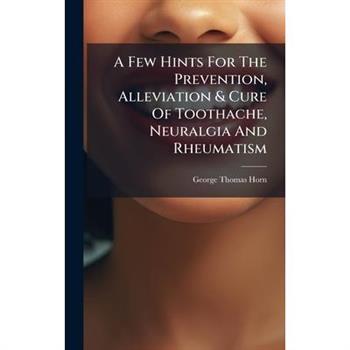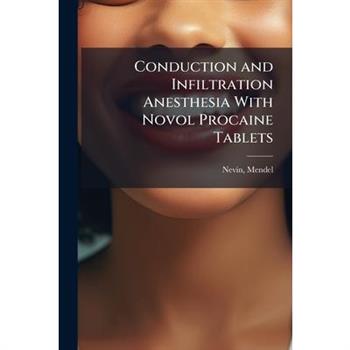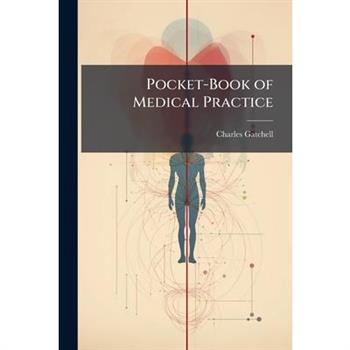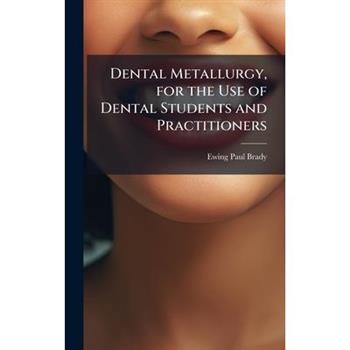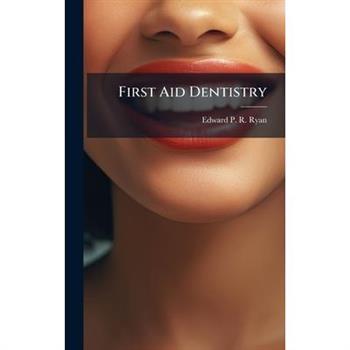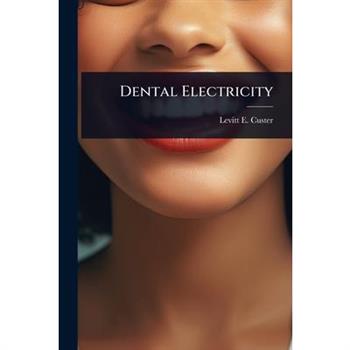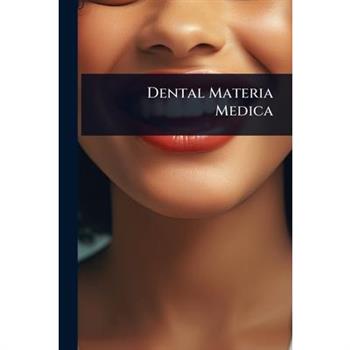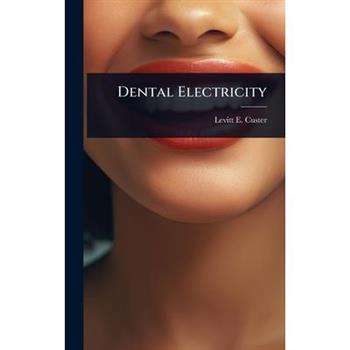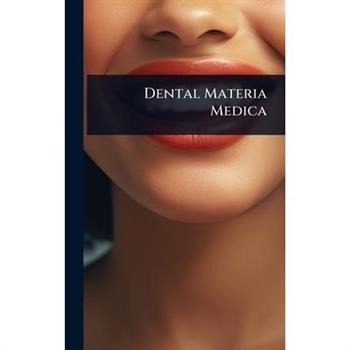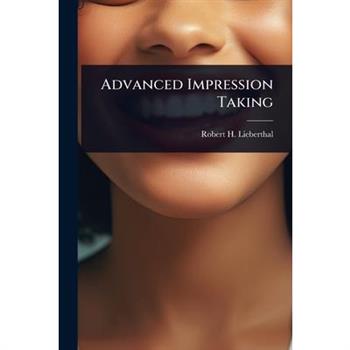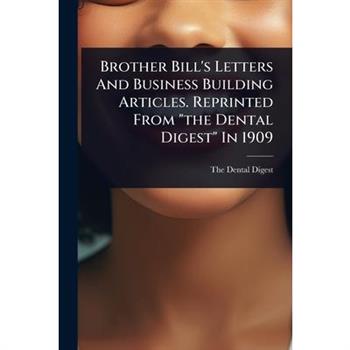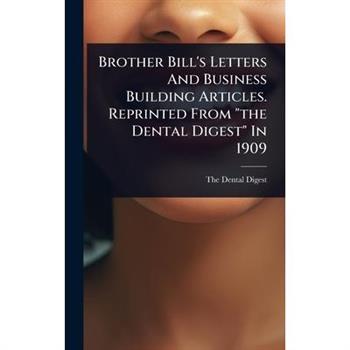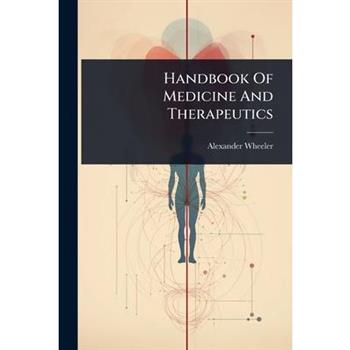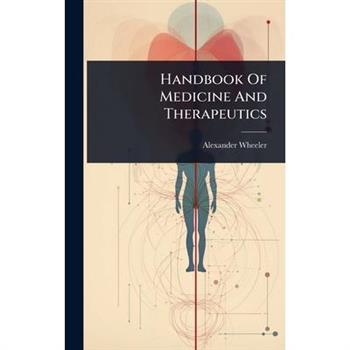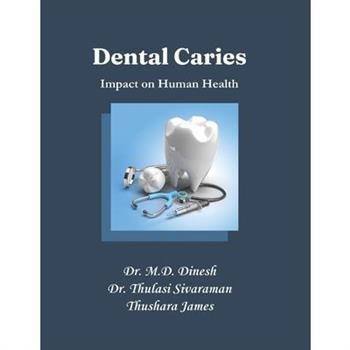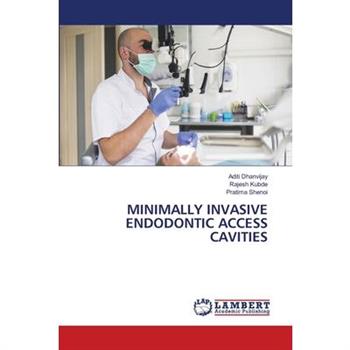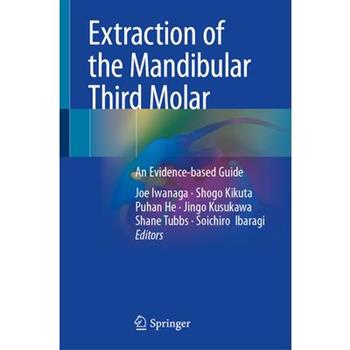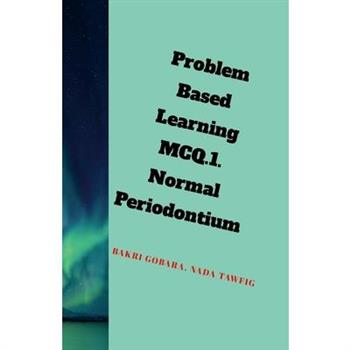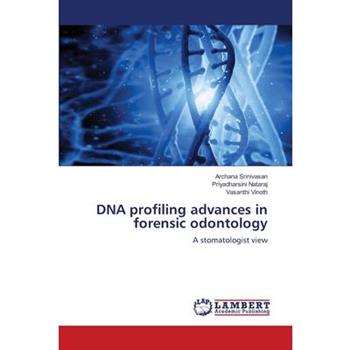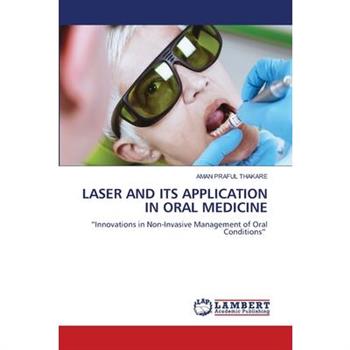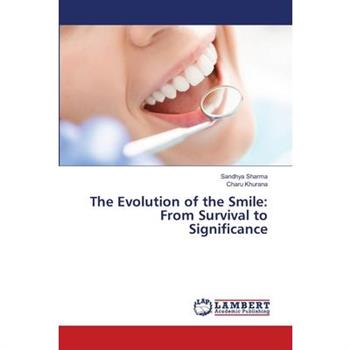Gutta percha
Gutta-percha has been the most popularly used semi solid material for obturating the root canal system. Its acceptance as a dental material runs for more than a century. In contrast to rubber, which is an elastic material, gutta-percha is non-elastic. It becomes plastic when heated but retains it shape when cooled. The differences between the two materials arise from their different chemical compositions. Gutta-percha demonstrates minimal toxicity, minimal tissue irritability and is the least allergenic material available when retained within the root canal system when used as obturating material.
Tooth Under the Lens
Ground sections are ultra-thin slices of hard tissues such as teeth and bones that are meticulously prepared to study their detailed internal structure under a microscope. These sections are essential in various fields like histology (the study of tissue architecture), forensic odontology (identifying individuals based on dental evidence), and dental education (teaching students the microscopic anatomy of teeth).Tooth ground sectioning is considered an invaluable technique for studying dental anatomy, especially for visualizing the relationship between enamel, dentin, pulp chamber, and surrounding cementum. It has the added advantage of being a non-chemical and non-destructive method, thus preserving the tooth's natural architecture. For instance, in educational settings, ground sections help students observe the intricate patterns of enamel prisms or sclerotic dentin in aging teeth.This book aims to comprehensively explore the apparatus required, the techniques employed, and the recent advancements in the preparation and analysis of tooth ground sections.
Microbial Allies
The main cause of periodontal diseases, which are chronic inflammatory illnesses that impact the tissues that support teeth, is pathogenic microorganisms found in dental plaque. These conditions include periodontitis, which can lead to tooth loss, and gingivitis, which is a minor inflammation of the gums. Traditionally, antibiotics, antiseptics, and mechanical debridement (scaling and root planing) are used in management. These techniques do have certain drawbacks, though, such as side effects, growing antibiotic resistance, and insufficient pathogen clearance. Probiotics, which are described as live microorganisms that, when given in sufficient quantities, help the host's health, have become a promising adjuvant therapy in periodontal care in recent years. Probiotics are a new, safe, and useful supplement for treating periodontal disorders. They provide a comprehensive approach to oral health by lowering inflammation, decreasing the growth of infections, and reestablishing microbial equilibrium. Evidence currently available supports the use of probiotics in periodontal therapy protocols.
Biomechanics of Aligners
Esthetics has always been the concern in the treatment options of patients and introduction of Clear Aligner was a major breakthrough in the journey. This book emphasizes on the most important aspect of Clear Aligner Therapy that is the Biomechanics of Aligners. Aligners are the current most preferred treatment option in Orthodontics and understanding the basic biomechanics is the key to successful treatment. The book helps in keeping up to the knowledge of the current trends in digital orthodontics and delivering an functional and esthetic treatment option to patients.
Pro- Inflammatory Markers as a Risk Factor in Chronic Periodontitis
Chronic Periodontitis is a complex inflammatory disease influenced by both microbial and host-related factors. Among the most significant host-derived contributors are Pro-inflammatory markers such as interleukin-1β (IL-1β), tumor necrosis factor-alpha (TNF-α), prostaglandin E2 (PGE2) and Macrophage Inflammatory Protein(MIP-1α). These biomarkers play a critical role in mediating the inflammatory response to periodontal pathogens, leading to the destruction of connective tissue and alveolar bone. Elevated levels of these markers in gingival crevicular fluid, saliva, or serum have been consistently associated with increased disease severity and progression. Their presence reflects an exaggerated host response, making them valuable indicators of active periodontal destruction. As such, pro-inflammatory markers are not only involved in the pathogenesis of chronic periodontitis but they also serve as important risk factors for its onset and advancement.
The International Journal of Orthodontia
"The International Journal of Orthodontia, Volume 4" (1918) is a valuable resource for students, researchers, and practitioners in the field of orthodontics. This historical journal provides insights into the techniques, theories, and case studies that shaped the early 20th-century understanding of dental and facial development. Featuring detailed articles and illustrations, this volume explores topics such as the treatment of malocclusion, the mechanics of tooth movement, and the correction of jaw deformities. Published for professionals dedicated to advancing orthodontic knowledge, this journal offers a glimpse into the challenges and innovations of early orthodontic practice. Its enduring value lies in its contribution to the foundations of modern orthodontic principles.This work has been selected by scholars as being culturally important, and is part of the knowledge base of civilization as we know it. This work was reproduced from the original artifact, and remains as true to the original work as possible. Therefore, you will see the original copyright references, library stamps (as most of these works have been housed in our most important libraries around the world), and other notations in the work.This work is in the public domain in the United States of America, and possibly other nations. Within the United States, you may freely copy and distribute this work, as no entity (individual or corporate) has a copyright on the body of the work.As a reproduction of a historical artifact, this work may contain missing or blurred pages, poor pictures, errant marks, etc. Scholars believe, and we concur, that this work is important enough to be preserved, reproduced, and made generally available to the public. We appreciate your support of the preservation process, and thank you for being an important part of keeping this knowledge alive and relevant.
The International Journal of Orthodontia
"The International Journal of Orthodontia, Volume 4" (1918) is a valuable resource for students, researchers, and practitioners in the field of orthodontics. This historical journal provides insights into the techniques, theories, and case studies that shaped the early 20th-century understanding of dental and facial development. Featuring detailed articles and illustrations, this volume explores topics such as the treatment of malocclusion, the mechanics of tooth movement, and the correction of jaw deformities. Published for professionals dedicated to advancing orthodontic knowledge, this journal offers a glimpse into the challenges and innovations of early orthodontic practice. Its enduring value lies in its contribution to the foundations of modern orthodontic principles.This work has been selected by scholars as being culturally important, and is part of the knowledge base of civilization as we know it. This work was reproduced from the original artifact, and remains as true to the original work as possible. Therefore, you will see the original copyright references, library stamps (as most of these works have been housed in our most important libraries around the world), and other notations in the work.This work is in the public domain in the United States of America, and possibly other nations. Within the United States, you may freely copy and distribute this work, as no entity (individual or corporate) has a copyright on the body of the work.As a reproduction of a historical artifact, this work may contain missing or blurred pages, poor pictures, errant marks, etc. Scholars believe, and we concur, that this work is important enough to be preserved, reproduced, and made generally available to the public. We appreciate your support of the preservation process, and thank you for being an important part of keeping this knowledge alive and relevant.
Never fear again at the dentist
Never Fear the Dentist Again is your personal guide to relaxed dental visits-without heart palpitations or sweating. In this book, you will learn why fears arise, how they influence our behavior, and, most importantly, how you can overcome them permanently. With concrete strategies, practical exercises, and valuable insights from modern dentistry, this book will help you gain confidence, regain control, and finally look forward to a healthy smile again. For anyone who is ready to free themselves from old fears-and surprise themselves.
First Aid Dentistry
"First Aid Dentistry" by Edward P. R. Ryan, originally published in 1914, offers a comprehensive guide to managing dental emergencies and providing immediate care for various oral conditions. This historical text provides insights into the dental practices and knowledge of the early 20th century, making it a valuable resource for those interested in the history of dentistry. The book details practical methods for addressing common dental issues, offering advice and techniques relevant for emergency situations where professional dental care might not be immediately available.While modern dental practices have evolved, the fundamental principles of first aid dentistry remain relevant, and this book serves as an important historical document reflecting the evolution of dental care and emergency treatment. This book is a must-read for historians, dental professionals, and anyone curious about the roots of modern dental medicine.This work has been selected by scholars as being culturally important, and is part of the knowledge base of civilization as we know it. This work was reproduced from the original artifact, and remains as true to the original work as possible. Therefore, you will see the original copyright references, library stamps (as most of these works have been housed in our most important libraries around the world), and other notations in the work.This work is in the public domain in the United States of America, and possibly other nations. Within the United States, you may freely copy and distribute this work, as no entity (individual or corporate) has a copyright on the body of the work.As a reproduction of a historical artifact, this work may contain missing or blurred pages, poor pictures, errant marks, etc. Scholars believe, and we concur, that this work is important enough to be preserved, reproduced, and made generally available to the public. We appreciate your support of the preservation process, and thank you for being an important part of keeping this knowledge alive and relevant.
Movable-removable Bridgework
"Movable-removable Bridgework" by Herman E. S. Chayes offers a detailed exploration into the techniques required for constructing unilateral, compound movable-removable bridges. This comprehensive guide delves into the intricacies of dental prosthodontics, providing a rich, illustrated account of the instruments and attachments essential for advanced dental procedures. Focusing on practical application, this book provides an invaluable resource for dental professionals seeking to master sophisticated bridgework techniques. With its detailed descriptions and clear illustrations, the book serves as both a learning tool for students and a reference for seasoned practitioners. Discover the nuances of creating functional and aesthetically pleasing dental restorations with this classic text.This work has been selected by scholars as being culturally important, and is part of the knowledge base of civilization as we know it. This work was reproduced from the original artifact, and remains as true to the original work as possible. Therefore, you will see the original copyright references, library stamps (as most of these works have been housed in our most important libraries around the world), and other notations in the work.This work is in the public domain in the United States of America, and possibly other nations. Within the United States, you may freely copy and distribute this work, as no entity (individual or corporate) has a copyright on the body of the work.As a reproduction of a historical artifact, this work may contain missing or blurred pages, poor pictures, errant marks, etc. Scholars believe, and we concur, that this work is important enough to be preserved, reproduced, and made generally available to the public. We appreciate your support of the preservation process, and thank you for being an important part of keeping this knowledge alive and relevant.
Dental Quarterly
"Dental Quarterly, Volume 5" presents a compilation of articles and research relevant to the field of dentistry. Addressing various aspects of dental health, the journal provides insights into periodontics, dental hygiene practices, and general dental care. This volume serves as a valuable resource for dental professionals, researchers, and students seeking to stay informed about advancements and best practices in the dental field. The anonymous authorship suggests a focus on the collective knowledge and contributions of various experts, making it a comprehensive and authoritative source for the dental community.This work has been selected by scholars as being culturally important, and is part of the knowledge base of civilization as we know it. This work was reproduced from the original artifact, and remains as true to the original work as possible. Therefore, you will see the original copyright references, library stamps (as most of these works have been housed in our most important libraries around the world), and other notations in the work.This work is in the public domain in the United States of America, and possibly other nations. Within the United States, you may freely copy and distribute this work, as no entity (individual or corporate) has a copyright on the body of the work.As a reproduction of a historical artifact, this work may contain missing or blurred pages, poor pictures, errant marks, etc. Scholars believe, and we concur, that this work is important enough to be preserved, reproduced, and made generally available to the public. We appreciate your support of the preservation process, and thank you for being an important part of keeping this knowledge alive and relevant.
Movable-removable Bridgework
"Movable-removable Bridgework" by Herman E. S. Chayes offers a detailed exploration into the techniques required for constructing unilateral, compound movable-removable bridges. This comprehensive guide delves into the intricacies of dental prosthodontics, providing a rich, illustrated account of the instruments and attachments essential for advanced dental procedures. Focusing on practical application, this book provides an invaluable resource for dental professionals seeking to master sophisticated bridgework techniques. With its detailed descriptions and clear illustrations, the book serves as both a learning tool for students and a reference for seasoned practitioners. Discover the nuances of creating functional and aesthetically pleasing dental restorations with this classic text.This work has been selected by scholars as being culturally important, and is part of the knowledge base of civilization as we know it. This work was reproduced from the original artifact, and remains as true to the original work as possible. Therefore, you will see the original copyright references, library stamps (as most of these works have been housed in our most important libraries around the world), and other notations in the work.This work is in the public domain in the United States of America, and possibly other nations. Within the United States, you may freely copy and distribute this work, as no entity (individual or corporate) has a copyright on the body of the work.As a reproduction of a historical artifact, this work may contain missing or blurred pages, poor pictures, errant marks, etc. Scholars believe, and we concur, that this work is important enough to be preserved, reproduced, and made generally available to the public. We appreciate your support of the preservation process, and thank you for being an important part of keeping this knowledge alive and relevant.
Conduction and Infiltration Anesthesia With Novol Procaine Tablets
A detailed guide to conduction and infiltration anesthesia using Novol procaine tablets, "Conduction and Infiltration Anesthesia," by Mendel Nevin, provides a comprehensive overview of techniques relevant to early 20th-century dental and medical practices. This practical manual, originally published in 1919, outlines the preparation, administration, and application of procaine-based anesthesia, commonly known as Novol. Nevin's work emphasizes precise methods for achieving effective local anesthesia. This historical text offers insights into the evolution of anesthetic practices and the materials used, reflecting the state of medical knowledge at the time. "Conduction and Infiltration Anesthesia" remains a valuable resource for those interested in the history of medicine and the development of anesthetic techniques.This work has been selected by scholars as being culturally important, and is part of the knowledge base of civilization as we know it. This work was reproduced from the original artifact, and remains as true to the original work as possible. Therefore, you will see the original copyright references, library stamps (as most of these works have been housed in our most important libraries around the world), and other notations in the work.This work is in the public domain in the United States of America, and possibly other nations. Within the United States, you may freely copy and distribute this work, as no entity (individual or corporate) has a copyright on the body of the work.As a reproduction of a historical artifact, this work may contain missing or blurred pages, poor pictures, errant marks, etc. Scholars believe, and we concur, that this work is important enough to be preserved, reproduced, and made generally available to the public. We appreciate your support of the preservation process, and thank you for being an important part of keeping this knowledge alive and relevant.
A Few Hints For The Prevention, Alleviation & Cure Of Toothache, Neuralgia And Rheumatism
"A Few Hints For The Prevention, Alleviation & Cure Of Toothache, Neuralgia And Rheumatism" offers practical advice for managing common ailments. Written by George Thomas Horn, this book presents a collection of remedies and preventative measures aimed at reducing suffering from toothache, neuralgia, and rheumatism. It serves as a valuable resource for those seeking accessible and straightforward guidance on pain management. The hints provided offer time-tested approaches to alleviate discomfort and improve well-being. Whether used as a historical reference or a source of alternative methods, this book provides insights into traditional approaches to health and self-care.This work has been selected by scholars as being culturally important, and is part of the knowledge base of civilization as we know it. This work was reproduced from the original artifact, and remains as true to the original work as possible. Therefore, you will see the original copyright references, library stamps (as most of these works have been housed in our most important libraries around the world), and other notations in the work.This work is in the public domain in the United States of America, and possibly other nations. Within the United States, you may freely copy and distribute this work, as no entity (individual or corporate) has a copyright on the body of the work.As a reproduction of a historical artifact, this work may contain missing or blurred pages, poor pictures, errant marks, etc. Scholars believe, and we concur, that this work is important enough to be preserved, reproduced, and made generally available to the public. We appreciate your support of the preservation process, and thank you for being an important part of keeping this knowledge alive and relevant.
Dental Quarterly
"Dental Quarterly, Volume 5" presents a compilation of articles and research relevant to the field of dentistry. Addressing various aspects of dental health, the journal provides insights into periodontics, dental hygiene practices, and general dental care. This volume serves as a valuable resource for dental professionals, researchers, and students seeking to stay informed about advancements and best practices in the dental field. The anonymous authorship suggests a focus on the collective knowledge and contributions of various experts, making it a comprehensive and authoritative source for the dental community.This work has been selected by scholars as being culturally important, and is part of the knowledge base of civilization as we know it. This work was reproduced from the original artifact, and remains as true to the original work as possible. Therefore, you will see the original copyright references, library stamps (as most of these works have been housed in our most important libraries around the world), and other notations in the work.This work is in the public domain in the United States of America, and possibly other nations. Within the United States, you may freely copy and distribute this work, as no entity (individual or corporate) has a copyright on the body of the work.As a reproduction of a historical artifact, this work may contain missing or blurred pages, poor pictures, errant marks, etc. Scholars believe, and we concur, that this work is important enough to be preserved, reproduced, and made generally available to the public. We appreciate your support of the preservation process, and thank you for being an important part of keeping this knowledge alive and relevant.
A Few Hints For The Prevention, Alleviation & Cure Of Toothache, Neuralgia And Rheumatism
"A Few Hints For The Prevention, Alleviation & Cure Of Toothache, Neuralgia And Rheumatism" offers practical advice for managing common ailments. Written by George Thomas Horn, this book presents a collection of remedies and preventative measures aimed at reducing suffering from toothache, neuralgia, and rheumatism. It serves as a valuable resource for those seeking accessible and straightforward guidance on pain management. The hints provided offer time-tested approaches to alleviate discomfort and improve well-being. Whether used as a historical reference or a source of alternative methods, this book provides insights into traditional approaches to health and self-care.This work has been selected by scholars as being culturally important, and is part of the knowledge base of civilization as we know it. This work was reproduced from the original artifact, and remains as true to the original work as possible. Therefore, you will see the original copyright references, library stamps (as most of these works have been housed in our most important libraries around the world), and other notations in the work.This work is in the public domain in the United States of America, and possibly other nations. Within the United States, you may freely copy and distribute this work, as no entity (individual or corporate) has a copyright on the body of the work.As a reproduction of a historical artifact, this work may contain missing or blurred pages, poor pictures, errant marks, etc. Scholars believe, and we concur, that this work is important enough to be preserved, reproduced, and made generally available to the public. We appreciate your support of the preservation process, and thank you for being an important part of keeping this knowledge alive and relevant.
Conduction and Infiltration Anesthesia With Novol Procaine Tablets
A detailed guide to conduction and infiltration anesthesia using Novol procaine tablets, "Conduction and Infiltration Anesthesia," by Mendel Nevin, provides a comprehensive overview of techniques relevant to early 20th-century dental and medical practices. This practical manual, originally published in 1919, outlines the preparation, administration, and application of procaine-based anesthesia, commonly known as Novol. Nevin's work emphasizes precise methods for achieving effective local anesthesia. This historical text offers insights into the evolution of anesthetic practices and the materials used, reflecting the state of medical knowledge at the time. "Conduction and Infiltration Anesthesia" remains a valuable resource for those interested in the history of medicine and the development of anesthetic techniques.This work has been selected by scholars as being culturally important, and is part of the knowledge base of civilization as we know it. This work was reproduced from the original artifact, and remains as true to the original work as possible. Therefore, you will see the original copyright references, library stamps (as most of these works have been housed in our most important libraries around the world), and other notations in the work.This work is in the public domain in the United States of America, and possibly other nations. Within the United States, you may freely copy and distribute this work, as no entity (individual or corporate) has a copyright on the body of the work.As a reproduction of a historical artifact, this work may contain missing or blurred pages, poor pictures, errant marks, etc. Scholars believe, and we concur, that this work is important enough to be preserved, reproduced, and made generally available to the public. We appreciate your support of the preservation process, and thank you for being an important part of keeping this knowledge alive and relevant.
Mosby's Orthodontic Review
Prepare for the INBDE and ABO certification exams the smart way with Mosby's Orthodontic Review, Third Edition! This comprehensive resource offers a concise review of orthodontic concepts, diagnosis, treatment planning, and clinical treatment - all in a question-and-answer format that is ideal for certification and re-certification exam prep, as well as for clinical practice. Plus, clinical case reports allow you to apply your knowledge to real patient scenarios. This is the only review book designed specifically for orthodontics, making it a must-have for students, residents, general dentists, and orthodontists!NEW! 15 new chapters cover a range of topics, including craniofacial growth and development from conception to birth; etiology of malocclusion; the development of oral function; sleep disordered breathing; AI in diagnosis and treatment planning; biomaterials and 3D printing; clear aligner treatment; and othersNEW! Clinical photos, figures, tables and boxes enhance understanding of the content throughout the textNEW! Enhanced ebook version, included with every new print purchase, features 480 multiple-choice review questions for the ABO exam, plus digital access to all the text, figures, and references, with the ability to search, customize content, make notes and highlights, and have content read aloudNEW! Sectioned approach in the table of contents provides greater clarity, structure, and utility of the contentEasy-to-read, question-and-answer format presents information in a digestible format to promote high-yield learning for orthodontic and dental board examsCase-based approach, including many patient scenarios and clinical case reports, reflects and supports the content styles in both the ABO and INBDE exam formatMore than 1,000 illustrations provide a visual guide to conditions, techniques, diagnoses, and key concepts in orthodontic practice and treatmentExpert team of international lead authors and contributors brings both academic and clinical expertise to the content
Dental Metallurgy, for the Use of Dental Students and Practitioners
"Dental Metallurgy, for the Use of Dental Students and Practitioners" is a comprehensive guide to the properties and applications of metals in dentistry, authored by Ewing Paul Brady. Originally published to serve as a textbook for dental students, this book offers detailed insights into the composition, characteristics, and manipulation of various metals and alloys used in dental procedures. From gold and silver to platinum and base metals, each material is examined in terms of its physical and chemical properties, as well as its suitability for different dental applications. The book covers essential topics such as melting, casting, soldering, and electroplating, providing practical guidance for dental students and practitioners seeking to enhance their understanding of dental materials. With its clear explanations and thorough coverage, "Dental Metallurgy" remains a valuable resource for anyone involved in the field of dentistry, offering a foundation in the principles of metallurgy as they relate to dental practice.This work has been selected by scholars as being culturally important, and is part of the knowledge base of civilization as we know it. This work was reproduced from the original artifact, and remains as true to the original work as possible. Therefore, you will see the original copyright references, library stamps (as most of these works have been housed in our most important libraries around the world), and other notations in the work.This work is in the public domain in the United States of America, and possibly other nations. Within the United States, you may freely copy and distribute this work, as no entity (individual or corporate) has a copyright on the body of the work.As a reproduction of a historical artifact, this work may contain missing or blurred pages, poor pictures, errant marks, etc. Scholars believe, and we concur, that this work is important enough to be preserved, reproduced, and made generally available to the public. We appreciate your support of the preservation process, and thank you for being an important part of keeping this knowledge alive and relevant.
Pocket-Book of Medical Practice
"Pocket-Book of Medical Practice," by Charles Gatchell, offers a glimpse into the medical knowledge and practices of the early 20th century. This comprehensive guide covers a wide range of medical topics, including diseases of the kidneys, skin, nerves, eye, ear, nose, and throat, as well as obstetrics, gynecology, and surgery. Designed as a practical resource for medical practitioners, this book provides concise information and guidance on diagnosis and treatment. It serves as a valuable historical reference, showcasing the evolution of medical understanding and techniques over time. It will appeal to historians of medicine, medical students, and anyone interested in the history of healthcare.This work has been selected by scholars as being culturally important, and is part of the knowledge base of civilization as we know it. This work was reproduced from the original artifact, and remains as true to the original work as possible. Therefore, you will see the original copyright references, library stamps (as most of these works have been housed in our most important libraries around the world), and other notations in the work.This work is in the public domain in the United States of America, and possibly other nations. Within the United States, you may freely copy and distribute this work, as no entity (individual or corporate) has a copyright on the body of the work.As a reproduction of a historical artifact, this work may contain missing or blurred pages, poor pictures, errant marks, etc. Scholars believe, and we concur, that this work is important enough to be preserved, reproduced, and made generally available to the public. We appreciate your support of the preservation process, and thank you for being an important part of keeping this knowledge alive and relevant.
Dental Metallurgy, for the Use of Dental Students and Practitioners
"Dental Metallurgy, for the Use of Dental Students and Practitioners" is a comprehensive guide to the properties and applications of metals in dentistry, authored by Ewing Paul Brady. Originally published to serve as a textbook for dental students, this book offers detailed insights into the composition, characteristics, and manipulation of various metals and alloys used in dental procedures. From gold and silver to platinum and base metals, each material is examined in terms of its physical and chemical properties, as well as its suitability for different dental applications. The book covers essential topics such as melting, casting, soldering, and electroplating, providing practical guidance for dental students and practitioners seeking to enhance their understanding of dental materials. With its clear explanations and thorough coverage, "Dental Metallurgy" remains a valuable resource for anyone involved in the field of dentistry, offering a foundation in the principles of metallurgy as they relate to dental practice.This work has been selected by scholars as being culturally important, and is part of the knowledge base of civilization as we know it. This work was reproduced from the original artifact, and remains as true to the original work as possible. Therefore, you will see the original copyright references, library stamps (as most of these works have been housed in our most important libraries around the world), and other notations in the work.This work is in the public domain in the United States of America, and possibly other nations. Within the United States, you may freely copy and distribute this work, as no entity (individual or corporate) has a copyright on the body of the work.As a reproduction of a historical artifact, this work may contain missing or blurred pages, poor pictures, errant marks, etc. Scholars believe, and we concur, that this work is important enough to be preserved, reproduced, and made generally available to the public. We appreciate your support of the preservation process, and thank you for being an important part of keeping this knowledge alive and relevant.
First Aid Dentistry
"First Aid Dentistry" by Edward P. R. Ryan, originally published in 1914, offers a comprehensive guide to managing dental emergencies and providing immediate care for various oral conditions. This historical text provides insights into the dental practices and knowledge of the early 20th century, making it a valuable resource for those interested in the history of dentistry. The book details practical methods for addressing common dental issues, offering advice and techniques relevant for emergency situations where professional dental care might not be immediately available.While modern dental practices have evolved, the fundamental principles of first aid dentistry remain relevant, and this book serves as an important historical document reflecting the evolution of dental care and emergency treatment. This book is a must-read for historians, dental professionals, and anyone curious about the roots of modern dental medicine.This work has been selected by scholars as being culturally important, and is part of the knowledge base of civilization as we know it. This work was reproduced from the original artifact, and remains as true to the original work as possible. Therefore, you will see the original copyright references, library stamps (as most of these works have been housed in our most important libraries around the world), and other notations in the work.This work is in the public domain in the United States of America, and possibly other nations. Within the United States, you may freely copy and distribute this work, as no entity (individual or corporate) has a copyright on the body of the work.As a reproduction of a historical artifact, this work may contain missing or blurred pages, poor pictures, errant marks, etc. Scholars believe, and we concur, that this work is important enough to be preserved, reproduced, and made generally available to the public. We appreciate your support of the preservation process, and thank you for being an important part of keeping this knowledge alive and relevant.
Journal of Dental Research
The Journal of Dental Research, Volume 1, presents a comprehensive collection of early research and scholarly articles from the American Dental Association, the American Association For Dental Research, and the International Association For Dental Research. This historic volume offers invaluable insights into the state of dental science at the end of the 19th century. Readers will find detailed studies and discussions on a variety of topics related to dentistry, oral health, and related medical fields. A significant resource for historians of medicine, dental professionals, and anyone interested in the evolution of dental research, this journal provides a unique snapshot of the challenges and advancements in the field during its formative years.This work has been selected by scholars as being culturally important, and is part of the knowledge base of civilization as we know it. This work was reproduced from the original artifact, and remains as true to the original work as possible. Therefore, you will see the original copyright references, library stamps (as most of these works have been housed in our most important libraries around the world), and other notations in the work.This work is in the public domain in the United States of America, and possibly other nations. Within the United States, you may freely copy and distribute this work, as no entity (individual or corporate) has a copyright on the body of the work.As a reproduction of a historical artifact, this work may contain missing or blurred pages, poor pictures, errant marks, etc. Scholars believe, and we concur, that this work is important enough to be preserved, reproduced, and made generally available to the public. We appreciate your support of the preservation process, and thank you for being an important part of keeping this knowledge alive and relevant.
Practical Tips in Clinical Dentistry
This book is a comprehensive collection of practical tips across a variety of specialties for the whole dental team. It includes hands-on advice collected over many years on the diagnosis, treatment, management, and care of the dental patient. The book starts with chapters on practice management, patient communication and fundamentals of dentistry. The following chapters discuss practical tips in the different disciplines of dentistry including endodontics, periodontics, paediatric and restorative dentistry as well as oral surgery and implantology. The book concludes with two chapters on removable and fixed prosthodontics. Written in an easy-to-understand practical way including key points for busy clinicians and many clinical images, this book is a valuable companion for undergrade students and all practicing dental team members
Dental Electricity
Explore the intersection of dental science and electrical technology with "Dental Electricity" by Levitt E. Custer. This historical work delves into the application of electricity in dental practices, revealing early methods and innovations in electrotherapeutics. Discover how electricity was utilized in dentistry, offering a fascinating glimpse into the evolution of medical techniques. A valuable resource for historians of science, dental professionals, and anyone curious about the pioneering uses of technology in medicine.This work has been selected by scholars as being culturally important, and is part of the knowledge base of civilization as we know it. This work was reproduced from the original artifact, and remains as true to the original work as possible. Therefore, you will see the original copyright references, library stamps (as most of these works have been housed in our most important libraries around the world), and other notations in the work.This work is in the public domain in the United States of America, and possibly other nations. Within the United States, you may freely copy and distribute this work, as no entity (individual or corporate) has a copyright on the body of the work.As a reproduction of a historical artifact, this work may contain missing or blurred pages, poor pictures, errant marks, etc. Scholars believe, and we concur, that this work is important enough to be preserved, reproduced, and made generally available to the public. We appreciate your support of the preservation process, and thank you for being an important part of keeping this knowledge alive and relevant.
Dental Materia Medica
"Dental Materia Medica" is a comprehensive resource on the various medicinal substances used in dental practice. This detailed guide, intended for dental students and practitioners, explores the properties, preparation, and application of numerous drugs and compounds relevant to oral health. The book covers a wide array of topics, including antiseptics, analgesics, anesthetics, and other agents used to treat dental ailments and maintain oral hygiene.Organized for easy reference, each entry provides a thorough description of the substance, its source, chemical composition, physiological effects, and therapeutic uses. This classic text offers valuable insights into the traditional methods and materials employed in dentistry, making it an essential addition to any dental professional's library. Whether for historical interest or practical application, "Dental Materia Medica" remains a significant work in the field of dental medicine.This work has been selected by scholars as being culturally important, and is part of the knowledge base of civilization as we know it. This work was reproduced from the original artifact, and remains as true to the original work as possible. Therefore, you will see the original copyright references, library stamps (as most of these works have been housed in our most important libraries around the world), and other notations in the work.This work is in the public domain in the United States of America, and possibly other nations. Within the United States, you may freely copy and distribute this work, as no entity (individual or corporate) has a copyright on the body of the work.As a reproduction of a historical artifact, this work may contain missing or blurred pages, poor pictures, errant marks, etc. Scholars believe, and we concur, that this work is important enough to be preserved, reproduced, and made generally available to the public. We appreciate your support of the preservation process, and thank you for being an important part of keeping this knowledge alive and relevant.
Dental Electricity
Explore the intersection of dental science and electrical technology with "Dental Electricity" by Levitt E. Custer. This historical work delves into the application of electricity in dental practices, revealing early methods and innovations in electrotherapeutics. Discover how electricity was utilized in dentistry, offering a fascinating glimpse into the evolution of medical techniques. A valuable resource for historians of science, dental professionals, and anyone curious about the pioneering uses of technology in medicine.This work has been selected by scholars as being culturally important, and is part of the knowledge base of civilization as we know it. This work was reproduced from the original artifact, and remains as true to the original work as possible. Therefore, you will see the original copyright references, library stamps (as most of these works have been housed in our most important libraries around the world), and other notations in the work.This work is in the public domain in the United States of America, and possibly other nations. Within the United States, you may freely copy and distribute this work, as no entity (individual or corporate) has a copyright on the body of the work.As a reproduction of a historical artifact, this work may contain missing or blurred pages, poor pictures, errant marks, etc. Scholars believe, and we concur, that this work is important enough to be preserved, reproduced, and made generally available to the public. We appreciate your support of the preservation process, and thank you for being an important part of keeping this knowledge alive and relevant.
Dental Materia Medica
"Dental Materia Medica" is a comprehensive resource on the various medicinal substances used in dental practice. This detailed guide, intended for dental students and practitioners, explores the properties, preparation, and application of numerous drugs and compounds relevant to oral health. The book covers a wide array of topics, including antiseptics, analgesics, anesthetics, and other agents used to treat dental ailments and maintain oral hygiene.Organized for easy reference, each entry provides a thorough description of the substance, its source, chemical composition, physiological effects, and therapeutic uses. This classic text offers valuable insights into the traditional methods and materials employed in dentistry, making it an essential addition to any dental professional's library. Whether for historical interest or practical application, "Dental Materia Medica" remains a significant work in the field of dental medicine.This work has been selected by scholars as being culturally important, and is part of the knowledge base of civilization as we know it. This work was reproduced from the original artifact, and remains as true to the original work as possible. Therefore, you will see the original copyright references, library stamps (as most of these works have been housed in our most important libraries around the world), and other notations in the work.This work is in the public domain in the United States of America, and possibly other nations. Within the United States, you may freely copy and distribute this work, as no entity (individual or corporate) has a copyright on the body of the work.As a reproduction of a historical artifact, this work may contain missing or blurred pages, poor pictures, errant marks, etc. Scholars believe, and we concur, that this work is important enough to be preserved, reproduced, and made generally available to the public. We appreciate your support of the preservation process, and thank you for being an important part of keeping this knowledge alive and relevant.
Photobiomodulation Therapy in Oral Medicine
Photobiomodulation (PBM) includes a broad range of nonionizing light sources that, when applied to tissues, lead to anti-inflammatory effects, promote wound healing and tissue repair, improve neural function, and exert an analgesic effect. Although PBM is well established and accessible technique, there is great variability in PBM parameters, protocols, and equipment, which hampers consistent application. This comprehensive book intents to assist the clinician in determining the most appropriate PBM parameters according to the light source available, in a practical and easy way. Written by experts in the PBM and Oral Medicine fields, it provides the utmost protocols for treatment and prevention of the most prevalent diseases and conditions affecting the mouth and the mandibulo-maxillary complex, in the day-to-day patient care. The protocols have been established based on published articles with high scientific evidence, mainly Systematic Reviews, Meta-analysis, and Randomized Clinical Trials. The work is divided into three main sections: Photobiomodulation, Supportive Care in Cancer, and Oral Medicine. In each part, the subtopics encompass the most prevalent and relevant diseases and conditions that may beneficiate of PBM therapy. All chapters include a brief disease definition, followed by diagnosis methods and treatment options including PBM. Each chapter presents a suggestion of PBM protocol, with reproducible parameters that may be easily performed by qualified professionals. Photobiomodulation Therapy in Oral Medicine - Evidence-based Clinical Protocols aims to assist clinical practitioners in decision-making when it comes to classical Oral Medicine, oncology support as well as bone healing and repair.
Advanced Impression Taking
"Advanced Impression Taking: Scientific And Correct Method Based Upon Principles Founded By Drs. Greene" presents a detailed guide to the art and science of taking accurate dental impressions. Authored by Robert H. Lieberthal, this book meticulously outlines the principles and techniques developed by Drs. Greene, offering a scientific approach to achieving precision in dental prosthetics. This book is invaluable for dental students, practicing dentists, and laboratory technicians seeking to refine their skills in impression taking. It emphasizes the importance of a systematic and scientifically grounded methodology for creating dental impressions that are essential for the successful fabrication of dental prostheses. Readers will gain insights into the nuances of the Greene Method, enabling them to enhance the quality and accuracy of their work.This work has been selected by scholars as being culturally important, and is part of the knowledge base of civilization as we know it. This work was reproduced from the original artifact, and remains as true to the original work as possible. Therefore, you will see the original copyright references, library stamps (as most of these works have been housed in our most important libraries around the world), and other notations in the work.This work is in the public domain in the United States of America, and possibly other nations. Within the United States, you may freely copy and distribute this work, as no entity (individual or corporate) has a copyright on the body of the work.As a reproduction of a historical artifact, this work may contain missing or blurred pages, poor pictures, errant marks, etc. Scholars believe, and we concur, that this work is important enough to be preserved, reproduced, and made generally available to the public. We appreciate your support of the preservation process, and thank you for being an important part of keeping this knowledge alive and relevant.
Brother Bill’s Letters And Business Building Articles. Reprinted From ”the Dental Digest” In 1909
Brother Bill's Letters And Business Building Articles, reprinted from "The Dental Digest" in 1909, offers a fascinating glimpse into the world of early 20th-century dental practice and business. Penned with a distinctive voice, these letters and articles provide practical advice and insights on how to build a successful dental business during a period of significant change and growth in the profession.The collection focuses on techniques for attracting and retaining patients, improving communication, and enhancing the overall patient experience. While originally aimed at dentists of the era, the principles discussed retain their value and relevance for anyone interested in understanding the evolution of dental marketing and practice management. This reprint serves as both a valuable historical document and a source of timeless wisdom for business professionals.This work has been selected by scholars as being culturally important, and is part of the knowledge base of civilization as we know it. This work was reproduced from the original artifact, and remains as true to the original work as possible. Therefore, you will see the original copyright references, library stamps (as most of these works have been housed in our most important libraries around the world), and other notations in the work.This work is in the public domain in the United States of America, and possibly other nations. Within the United States, you may freely copy and distribute this work, as no entity (individual or corporate) has a copyright on the body of the work.As a reproduction of a historical artifact, this work may contain missing or blurred pages, poor pictures, errant marks, etc. Scholars believe, and we concur, that this work is important enough to be preserved, reproduced, and made generally available to the public. We appreciate your support of the preservation process, and thank you for being an important part of keeping this knowledge alive and relevant.
Brother Bill’s Letters And Business Building Articles. Reprinted From ”the Dental Digest” In 1909
Brother Bill's Letters And Business Building Articles, reprinted from "The Dental Digest" in 1909, offers a fascinating glimpse into the world of early 20th-century dental practice and business. Penned with a distinctive voice, these letters and articles provide practical advice and insights on how to build a successful dental business during a period of significant change and growth in the profession.The collection focuses on techniques for attracting and retaining patients, improving communication, and enhancing the overall patient experience. While originally aimed at dentists of the era, the principles discussed retain their value and relevance for anyone interested in understanding the evolution of dental marketing and practice management. This reprint serves as both a valuable historical document and a source of timeless wisdom for business professionals.This work has been selected by scholars as being culturally important, and is part of the knowledge base of civilization as we know it. This work was reproduced from the original artifact, and remains as true to the original work as possible. Therefore, you will see the original copyright references, library stamps (as most of these works have been housed in our most important libraries around the world), and other notations in the work.This work is in the public domain in the United States of America, and possibly other nations. Within the United States, you may freely copy and distribute this work, as no entity (individual or corporate) has a copyright on the body of the work.As a reproduction of a historical artifact, this work may contain missing or blurred pages, poor pictures, errant marks, etc. Scholars believe, and we concur, that this work is important enough to be preserved, reproduced, and made generally available to the public. We appreciate your support of the preservation process, and thank you for being an important part of keeping this knowledge alive and relevant.
A Study Of The Degeneracy Of The Jaws Of The Human Race
"A Study Of The Degeneracy Of The Jaws Of The Human Race" (1892), by Eugene S. Talbot, presents a detailed examination of the changes and deterioration observed in human jaw structures. This work delves into the anatomical and physiological aspects of the jaw, exploring the potential causes and implications of its degeneration. Talbot's research provides valuable insights into the medical and anthropological understanding of the human body during the late 19th century. The book remains a significant resource for those studying the history of dentistry, physical anthropology, and the evolution of human anatomy. This historical text offers a fascinating glimpse into the medical perspectives of the time and the ongoing study of human physical development.This work has been selected by scholars as being culturally important, and is part of the knowledge base of civilization as we know it. This work was reproduced from the original artifact, and remains as true to the original work as possible. Therefore, you will see the original copyright references, library stamps (as most of these works have been housed in our most important libraries around the world), and other notations in the work.This work is in the public domain in the United States of America, and possibly other nations. Within the United States, you may freely copy and distribute this work, as no entity (individual or corporate) has a copyright on the body of the work.As a reproduction of a historical artifact, this work may contain missing or blurred pages, poor pictures, errant marks, etc. Scholars believe, and we concur, that this work is important enough to be preserved, reproduced, and made generally available to the public. We appreciate your support of the preservation process, and thank you for being an important part of keeping this knowledge alive and relevant.
Handbook Of Medicine And Therapeutics
The "Handbook of Medicine and Therapeutics" is a comprehensive guide designed for medical professionals and students. This handbook provides a concise overview of essential medical information, covering a wide range of topics from general medicine to specialized therapeutics. Organized for quick reference, it includes key diagnostic criteria, treatment protocols, and management strategies for various medical conditions. Ideal for use in clinical settings, this handbook serves as a valuable resource for making informed decisions and delivering effective patient care. Its practical format and focus on therapeutic interventions make it an indispensable tool for healthcare providers seeking up-to-date and reliable information.This work has been selected by scholars as being culturally important, and is part of the knowledge base of civilization as we know it. This work was reproduced from the original artifact, and remains as true to the original work as possible. Therefore, you will see the original copyright references, library stamps (as most of these works have been housed in our most important libraries around the world), and other notations in the work.This work is in the public domain in the United States of America, and possibly other nations. Within the United States, you may freely copy and distribute this work, as no entity (individual or corporate) has a copyright on the body of the work.As a reproduction of a historical artifact, this work may contain missing or blurred pages, poor pictures, errant marks, etc. Scholars believe, and we concur, that this work is important enough to be preserved, reproduced, and made generally available to the public. We appreciate your support of the preservation process, and thank you for being an important part of keeping this knowledge alive and relevant.
Handbook Of Medicine And Therapeutics
The "Handbook of Medicine and Therapeutics" is a comprehensive guide designed for medical professionals and students. This handbook provides a concise overview of essential medical information, covering a wide range of topics from general medicine to specialized therapeutics. Organized for quick reference, it includes key diagnostic criteria, treatment protocols, and management strategies for various medical conditions. Ideal for use in clinical settings, this handbook serves as a valuable resource for making informed decisions and delivering effective patient care. Its practical format and focus on therapeutic interventions make it an indispensable tool for healthcare providers seeking up-to-date and reliable information.This work has been selected by scholars as being culturally important, and is part of the knowledge base of civilization as we know it. This work was reproduced from the original artifact, and remains as true to the original work as possible. Therefore, you will see the original copyright references, library stamps (as most of these works have been housed in our most important libraries around the world), and other notations in the work.This work is in the public domain in the United States of America, and possibly other nations. Within the United States, you may freely copy and distribute this work, as no entity (individual or corporate) has a copyright on the body of the work.As a reproduction of a historical artifact, this work may contain missing or blurred pages, poor pictures, errant marks, etc. Scholars believe, and we concur, that this work is important enough to be preserved, reproduced, and made generally available to the public. We appreciate your support of the preservation process, and thank you for being an important part of keeping this knowledge alive and relevant.
Dental Caries
"A HAPPY MOUTH IS..... A HAPPY BODY."Shiny teeth brighten your Healthy Smile. Explore the intricate world of dental science and the battle against tooth decay in this comprehensive guide. Delve into prevention, the impact of oral health on overall well-being, and the power of knowledge, illustrated with clarity and backed by extensive research and heartfelt acknowledgments.
Maxillary and Midface Reconstruction, Part 2, an Issue of Atlas of the Oral & Maxillofacial Surgery Clinics
In this issue of Atlas of the Oral and Maxillofacial Surgery Clinics, guest editors Drs. James C. Melville, Rui P. Fernandes, and Michael R. Markiewicz bring their considerable expertise to the topic of Maxillary and Midface Reconstruction, Part 2. This issue is Part 2 of a complete review of reconstruction of the midface and maxilla, featuring articles on reconstructing the orbit, reconstruction of skull base defects, tissue engineering and customized flaps, reconstruction for ballistic and avulsive injuries, pediatric facial reconstruction, and more.Contains 10 relevant, practice-oriented topics including an update on the technological future of reconstruction; consideration and technique in pediatric reconstructions; maxillary and midface reconstruction in non-ideal situations: troubleshooting in a difficult surgical field; and moreProvides in-depth clinical reviews on maxillary and midface reconstruction, offering actionable insights for clinical practicePresents the latest information on this timely, focused topic under the leadership of experienced editors in the field. Authors synthesize and distill the latest research and practice guidelines to create clinically significant, topic-based reviews
On the Relations Which Dental Caries (as Discovered Amongst the Ancient Inhabitants of Britain, and Amongst Existing Aboriginal Races) may be Supposed to Hold to Their Food and Social Condition
In 璽€œOn the Relations Which Dental Caries璽€]璽€, John Rigden Mummery explores the prevalence of dental caries (cavities) in ancient British populations and existing aboriginal races. This historical study delves into the potential connections between dental health, dietary habits, and social circumstances. Mummery's work provides valuable insights into the lives and health of past populations, offering a unique perspective on the interplay between environment, lifestyle, and physical well-being. This text is of interest to historians, anthropologists, and anyone fascinated by the intersection of dental health and social history.This work has been selected by scholars as being culturally important, and is part of the knowledge base of civilization as we know it. This work was reproduced from the original artifact, and remains as true to the original work as possible. Therefore, you will see the original copyright references, library stamps (as most of these works have been housed in our most important libraries around the world), and other notations in the work.This work is in the public domain in the United States of America, and possibly other nations. Within the United States, you may freely copy and distribute this work, as no entity (individual or corporate) has a copyright on the body of the work.As a reproduction of a historical artifact, this work may contain missing or blurred pages, poor pictures, errant marks, etc. Scholars believe, and we concur, that this work is important enough to be preserved, reproduced, and made generally available to the public. We appreciate your support of the preservation process, and thank you for being an important part of keeping this knowledge alive and relevant.
Tissue Fixation and Processing
This comprehensive manual provides an in-depth exploration of tissue fixation, processing, and embedding techniques essential in histopathology and biomedical research. Beginning with the fundamental concepts of autolysis and fixation, the book delves into the chemistry and classification of various fixatives including aldehydes, oxidizing agents, protein denaturants, and cross-linking compounds highlighting their mechanisms, applications, and impact on tissue morphology and staining properties. It further addresses the physical and chemical factors affecting fixation, such as pH, temperature, penetration rate, and osmolality. Detailed discussions cover both conventional and advanced methods like microwave fixation and the use of secondary fixatives for enhanced preservation. The book also provides extensive guidance on tissue processing stages, including dehydration, clearing, impregnation, and embedding using paraffin, celloidin, resins, and ester wax. Special sections include techniques for photomicrography, image analysis, and tumor marker identification, offering valuable insights for diagnostic and research applications.
Minimally Invasive Endodontic Access Cavities
Whereas traditional access cavities are portrayed as a dentist-conveniencefocused treatment, minimal access cavity preparation has been advocated as a patientcentered clinical strategy. The argument seems convincing at first glance because the old method is based on standardised shapes to provide direct access to all canal orifices, whereas dentine conservation through minimal cavities is intended to be achieved according to the clinical situations of teeth. The main justification for the socalled patient-centered approach is that the minimally invasive concept typically promotes the significance of leaving as much of the pulp chamber roof intact as possible. This is supported by the hypothesis that this is relevant to maintaining the overall resistance strength of teeth and, consequently, their long-term survival.
Extraction of the Mandibular Third Molar
This book is a comprehensive and evidence-based guide to the extraction of the mandibular third molar tooth. It includes sophisticated anatomical and radiological images, discusses contemporary scientific data based on the latest research, and guides the reader through the examination process and the surgical techniques of the extraction. The book is divided into five sections. In the first two sections, readers will learn about the basics of the mandibular third molar and the evidence of surgical complications including hemorrhage, pseudoaneurysm, nerve block and nerve injuries. Section 3 and 4 cover surgical techniques and preoperative evaluation such as risk assessment, preoperative conditions, anesthesia, and suturing methods. The last section focusses on clinical case presentations illustrating the management of various patients. This book is a must have for all general dentists, periodontists, specialists and residents of oral surgery, as well as for dental students.
Systemic Factors Affecting Prognosis and Outcomes of Dental Treatment, an Issue of Dental Clinics of North America
In this issue of Dental Clinics, guest editor Dr. Davis Thomas brings his considerable expertise to the topic of Systemic Factors Affecting Prognosis in Dentistry. Many health conditions and diseases can affect oral health, either systemically or due to physical inability to maintain appropriate oral hygiene. Conditions such as chronic pain, stress, or infections present a number of symptoms that may provide challenges to the dentist. This issue takes a holistic approach to treatment planning for systemic factors, with articles on implants, periodontal therapy, medications, genetics, orthodontics, and psychological issues.Contains 15 relevant, practice-oriented topics including systemic factors affecting prognosis of dental implants; COVID-19 and other emerging infections; genetics affecting prognosis of dental treatments; systemic factors affecting prognosis of pain management in dentistry; medications affecting treatment outcomes in dentistry; and more.Provides in-depth clinical reviews on systemic factors affecting prognosis in dentistry, offering actionable insights for clinical practice.Presents the latest information on this timely, focused topic under the leadership of experienced editors in the field. Authors synthesize and distill the latest research and practice guidelines to create clinically significant, topic-based reviews.
Dental Implantology and Bone Reconstruction in Oral Surgery
Dental implantology and bone reconstruction are critical components of modern oral surgery, aimed at restoring function and aesthetics in patients with missing teeth or insufficient jawbone. Dental implants serve as artificial tooth roots, providing a stable foundation for prosthetic restorations such as crowns or bridges. However, successful implantation often requires sufficient bone volume and density, which may be compromised due to trauma, infection, or long-term tooth loss. Bone reconstruction techniques-such as bone grafting, guided bone regeneration, and sinus lift procedures-are employed to rebuild and strengthen the jawbone prior to or during implant placement. Advances in biomaterials and surgical techniques have significantly improved outcomes, allowing for predictable and long-lasting results. By integrating implantology with bone regeneration, oral surgeons can offer comprehensive treatment plans that enhance oral function, facial structure, and patient confidence. This combined approach reflects a growing emphasis on precision, personalization, and long-term success in oral healthcare.
Problem Based Learning .MCQs.
Problem-based learning- Multiple-choice questions(PBL, MCQ) have clinical relevance. They stimulate real-world applied scenarios. They require critical thinking and decision skills similar to those needed in actual patient care. In the world of normal periodontium, we designed questions to be applicable. They allow students or clinicians to apply their knowledge to practical situations they might encounter in practice. They integrate knowledge in the context of anatomy, histology, and physiology. On the other hand, they force learners to prioritize actions. They help learners apply the guidance for assessment, diagnosis, and treatment. They effectively assess and bridge the gap between theory and practice when applied. This book is the first part of a series that addresses this issue. Keywords: Problem-based learning, Multiple-choice questions, Normal periodontium
DNA profiling advances in forensic odontology
DNA profiling, a forensic technique plays a crucial role in forensic odontology. DNA is unique to each individual, making it a highly reliable source for identification especially when identifying individuals from skeletal remains or damaged tissues. Teeth, due to their resilience and hard tissue structure, serve as an excellent source of DNA, making then valuable in investigations. DNA profiling allows for accurate identification, matching antemortem records with post mortem samples and can even provide information on ancestry and sex determination.
Digital Treatment Planning in Dentistry
This work explores the integration of digital technologies in modern dental practices to enhance treatment planning, execution, and patient care. It covers the evolution of digital dentistry, including CAD/CAM systems, 3D printing, artificial intelligence, augmented reality, and teledentistry. The study discusses various digital tools such as intraoral scanners, cone beam computed tomography (CBCT), and digital smile designing for improved diagnosis and treatment visualization. The document also highlights advancements in implant planning, regenerative dentistry, and robotic applications, emphasizing the benefits of precision, efficiency, and patient education. The book concludes that digital workflows have revolutionized prosthodontics, offering better predictability, accuracy, and patient outcomes in treatment procedures.
Laser and Its Application in Oral Medicine
Lasers (Light Amplification by Stimulated Emission of Radiation) are advanced tools used in oral medicine for both diagnostic and therapeutic purposes. They offer benefits such as precision, minimal bleeding, reduced pain, and faster healing. Common applications in oral medicine include the treatment of aphthous ulcers, oral lichen planus, leukoplakia, and fibromas. Lasers are also used in biopsy procedures, depigmentation, and photobiomodulation therapy for pain and inflammation control. Their minimally invasive nature makes them a valuable adjunct in modern dental and oral healthcare.
The Evolution of the Smile
The Evolution of the Smile: From Survival to Significance explores the smile's transformation from a primal survival tool to a powerful cultural symbol. Tracing its roots through evolutionary biology, the book examines how facial muscles, neural pathways, and dental changes shaped human expression. Teeth, central to this evolution, adapted with diet and influenced the social smile. Beyond biology, the meaning of smiling varies across cultures-signaling warmth, masking discomfort, or conveying status. The book delves into the psychology behind smiling, its impact on brain chemistry, and its role in empathy. It also reveals ancient dental practices and today's digital enhancements, questioning authenticity in a curated age. This interdisciplinary journey uncovers how smiling reflects emotion, identity, and our shared humanity.




